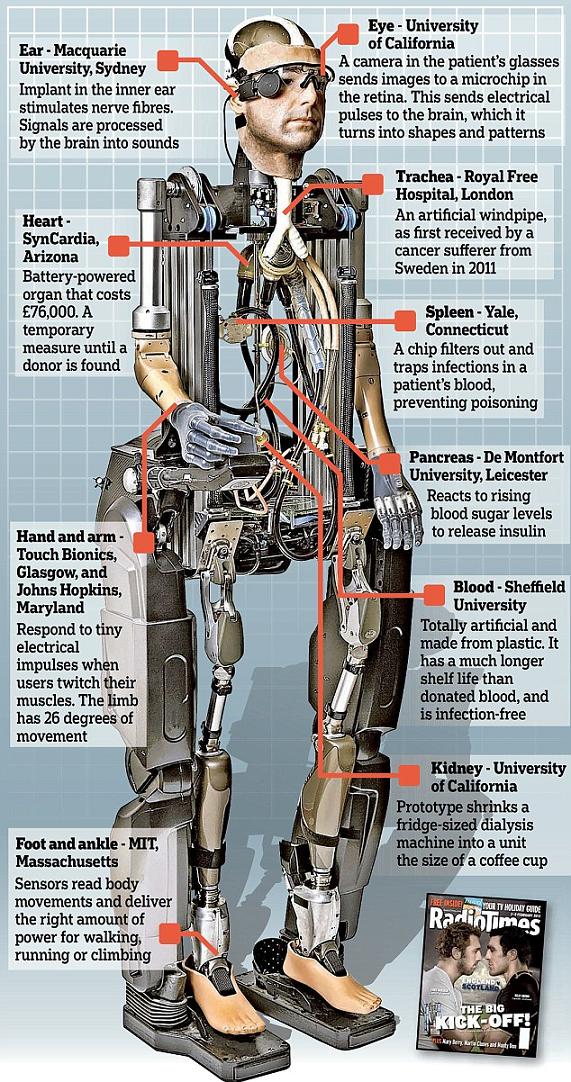Bionic Robot Makes Steve Austin Look Like The $6,000 Man
This article is more than 2 years old
Advancements in robotics, artificial anatomy, and genetics are putting human beings on perilous ground, and we will soon live in a world that takes evolution into its own lab-created hands. Is this an impassioned plea for change? Nope. My advice is only, “Love the one you’re with, assuming the one you’re with is a robot, because robots will inherit the earth.” That’s all.
For a BBC 4 documentary entitled How to Build a Bionic Man, airing on February 7th, social psychologist Dr. Bertoit Meyer is presenting Rex, a six-foot-tall man made completely from artificial and bionic limbs and organs. Rex, which stands for “robotic exoskeleton,” was built by U.K. roboticists Richard Walker and Matthew Godden, who sourced the state-of-the-art body parts from England, Australia, and all over the U.S. The final tally for costs came out to around $1,000,000. I wonder if they got the money out of a bionic piggy bank.

The science behind Rex’s limbs and organs has already made an impact in the real world. Rex has an arm with only one degree of movement less than a human arm, a battery-powered heart, eyes and ears that “see” and “hear,” plastic blood, and weight-balanced feet and ankles. Not to mention an artificial pancreas, spleen, trachea, and kidney. It seems like the only thing missing is a shiny metal ass for everybody to kiss.
The documentary will feature Dr. Meyer, who himself uses one of the world’s most advanced prosthetic hands, talking to some of the scientists behind this complex anatomy, which some fear may turn us into a sub-species of Frankenstein’s monsters. Dr. Meyer’s view follows this train of thought. “We might be at a point in science and technology where we see first glimpses of the possibilities to go beyond the limits of evolution. I think that really is a double-edged sword,” he says. But is it a sword that cuts without a hand to hold it? That’s for the future to tell.
Following the documentary, Rex will be on display at London’s Science Museum. Watch the video below to see just how Rex’s legs work.












